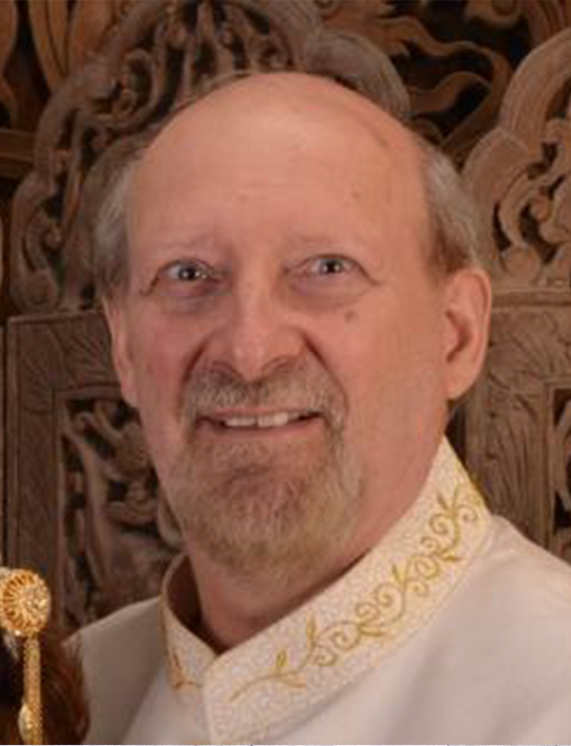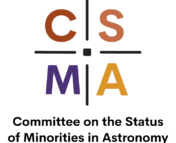In this series of posts, we sit down with a few of the keynote speakers of the 243rd AAS meeting to learn more about them and their research. You can see a full schedule of their talks here, and read our other interviews here!”

If you asked Dr. Wayne Orchiston where he saw his research career going when he first became an astronomer, being the recipient of 2024’s LeRoy E. Doggett Prize for Historical Astronomy probably would not have been his answer. The prize is awarded every other year by the AAS Historical Astronomy Division to someone “who has significantly influenced the field of the history of astronomy by a career-long effort.” He began his career interested in variable star photometry and radio emission, and didn’t necessarily expect to end up in historical astronomy. However, with a list of achievements now including co-founding the Journal of Astronomical History and Heritage (JAHH) in 1998 and co-editing it for the last 25 years, serving as the President of IAU Commission C3 from 2018-2021, and being a co-recipient of the 2019 Donald E. Osterbrock Book Prize with his former PhD student, Stella Cottam, it would be hard for anyone to argue that Orchiston does not meet the Prize’s criteria!
A Brief History of His-Story
Dr. Orchiston’s career path has been, in his words, “not at all typical!” After completing secondary school in New Zealand, he worked as a Technical Assistant in radio astronomy at Australia’s Commonwealth Scientific and Industrial Research Organisation (CSIRO) while completing a First Class Honours BA in prehistory as a part-time student at the University of Sydney (USYD). He then remained at USYD for his PhD, studying New Zealand’s environmental prehistory. After doing a postdoc at the University of Melbourne, he spent time working in museums before returning to work in variable star astronomy.
His career in historical astronomy really took off in the 1980s, when the Australian Bicentennial and the centennials of several discoveries made by the Australian astronomer John Tebbutt inspired him to begin extensively researching the history of Australian astronomy. He has since lived all around Australia and New Zealand, and currently lives in Thailand while working remotely on the faculty at the University of Science and Technology of China in Hefei, Anhui. Over the course of his career, he has begun the world’s first part-time, off-campus PhD program in the history of astronomy at James Cook University (now hosted at the University of Southern Queensland), published 15 books and hundreds of articles on historical astronomy in Asia and Oceania, been elected as an Honorary Member of the Royal Astronomical Society of New Zealand, and recently had the book Essays on Astronomical History and Heritage: A Tribute to Wayne Orchiston on His 80th Birthday published in his honor.
These days, Orchiston says his work with JAHH occupies most of his time, but he has a long list of topics he’d like to finish work on, including early radio astronomy, the 1874 transit of Venus (celebrating its 150th anniversary this year), and the work he has been performing in collaboration with his wife, Darunee Lingling Orchiston, that “synthesize[s] data from anthropology, astronomy, geology, history, hominid paleontology, linguistics, paleoclimatology and prehistory in order to identify changes in prehistoric cultures in India and Southeast Asia over the past 70,000 years, and postulate[s] the associated changes that occurred in the astronomical systems there.”
Orchiston is proud of how the field of historical astronomy has grown over the course of his career, and he notes that it “is now very wide-ranging, and there are many different research areas one can focus on,” including areas such as applied historical astronomy, archaeoastronomy, and ethnoastronomy.
Career Advice
Orchiston’s advice for young researchers includes being open to “non-traditional” astronomy research. He applauds the mentorship of professors such as Dr. Taufiq Hidayat at Indonesia’s Institut Teknologi Bandung, who encourages undergraduate and masters students to take on smaller research projects in historical astronomy and publish or present their results. “Such non-astrophysics contributions strengthen a student’s case when they apply for graduate scholarship and/or for postdocs, and also open up career avenues outside of academia and observatories – i.e. in planetariums, science museums and science centers.” He also urges us to remember that even if, for whatever reason, we aren’t able to pursue astronomy professionally, many citizen science projects exist now that allow amateur astronomers to contribute to exciting research projects. Many of these projects, such as NASA’s Exoplanet Watch program, will list you as a co-author on publications and conference proceedings that use your contributions.
He also emphasizes the need to find your niche in research, “the specific type of astronomy that really resonates with you.” Then, he says, “you can build your reputation through your research and publications, creating visibility at selected international conferences with good oral papers and especially with posters that really stand out,” essentially creating your own personal brand. “Sometimes your niche may be a real surprise…[I] never imagined that history of astronomy was my niche. Now I’m very comfortable there! I feel at home.”
Dr. Orchiston considers opportunity, dedication, collaboration, passion, and having a supportive partner to be among the keys to his success in history of astronomy. He will emphasize these “ingredients” in his prize lecture, which will cover his journey through historical astronomy, starting with his boyhood interest in John Tebbutt and leading us through 60 years of his life and career.
To hear more about historical astronomy, check out Dr. Orchiston’s Plenary Lecture at 7:00 PM CT on Monday, January 8th at #AAS243!
Edited by: Jessie Thwaites
Featured Image Credit: AAS




